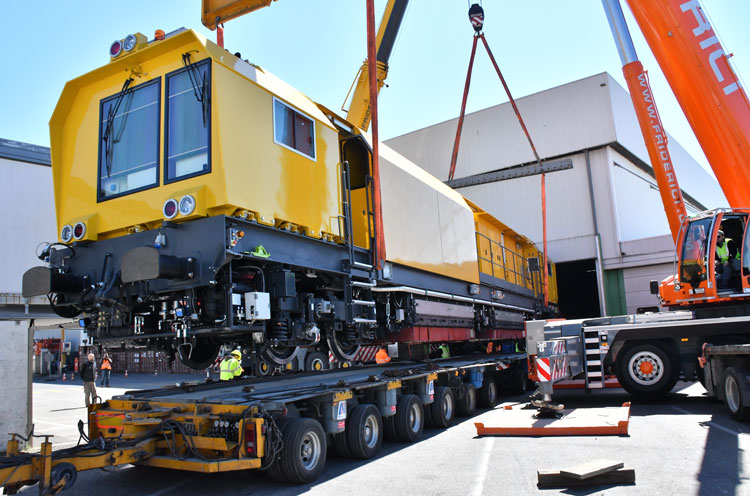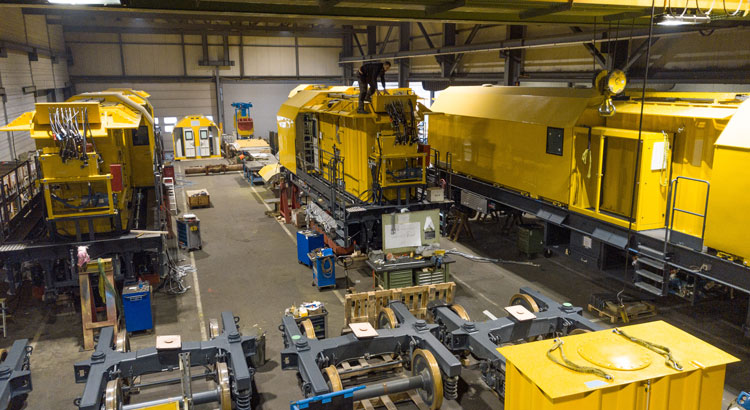SPENO International SA and MATISA Materiel Industriel SA: Over 20 years of successful partnership
Posted: 18 February 2020 | André Zurbrugg | No comments yet
The identical cultures and language shared by SPENO International SA and MATISA Materiel Industriel SA have allowed both companies to create a very successful partnership in technical cooperation for over 20 years. André Zurbrugg, Sales Engineer at MATISA, explains more.


Basis for a partnership
Common needs and interests lead to alliances aiming at attaining common objectives. Alliances are made and maintained by people – people define who we are, how we do what we do and why. All of this creates a culture of functioning that can lead to aspired mutual success. It depends on each and every person within the concerned entities. The identical culture and language that SPENO and MATISA share have allowed both companies to create a very successful partnership in technical cooperation for over 20 years.
Common markets
SPENO’s principal function is being the provider of track rail-reprofiling services to various railways. MATISA is a manufacturer of railway track construction and track maintenance machines. Both companies benefit from the same main markets and customers all over the world.
Necessity creates opportunity
Considering the favourable evolution of the railways, the beginning of 2000 saw SPENO in need of a new fleet of machines that corresponded best to the future requirements of the railways. In the meantime, evolved machine certification requirements for Europe required the development of a new generation of machines complying with the latest rules and regulations.
Identical applied technologies
SPENO not only offers rail-reprofiling services, but is also a manufacturer (Mecnafer, in Italy) of its own developed machines for very specific markets. Both SPENO and MATISA use many components coming from the same suppliers. This brings the advantages to a point where there is common applied technology and expertise, making it much easier to co-develop new generation machines together. Understanding each other is key, and MATISA’s technical know-how and expertise is located only 65km away from SPENO in Geneva.


A RR 48 machine leaving MATISA’s Crissier factory and being prepared for transportation
Development and manufacturing advantages
Existing proven technologies from both companies were combined, others were newly developed, into what became the future new generation fleet of machines best corresponding to the future requirements and expectations of the railways. The simple fact that, from the beginning, the SPENO and MATISA engineering and manufacturing teams had clear understandings of what was to be achieved helped tremendously in the development of the new machines. This also greatly simplified the project coordination between the two companies and the manufacturing of machines that were, in part, new to MATISA.
Combined learning curve
The combination of highly experienced forces by both entities and their respective core businesses also created a very interesting platform for the mutual exchange of experience and a good basis for learning with these new machines as time went on. Performance requirements went up to 3000kW for traction and supplying of up to 2800kVA electrical power per machine. Some of these performance zones were new to MATISA and had to be mastered.
As part of the ongoing technical cooperation, SPENO is responsible for the supply of all elements/assemblies pertaining to the driving and operating of the machine, which includes all major control units, as well as the overall rail-reprofiling system.
MATISA is responsible for the supply of all elements/assemblies pertaining to the machine frames, the complete energy systems, the traction systems (hydrodynamic and hydrostatic), including the bogies and the security systems permitting circulation on the railway networks.
All elements from both sides are then assembled at MATISA’s Crissier factory into complete operational machines, ready for testing and hand-over to the customer.
Identical vehicle certification requirements
These highly sophisticated and complex machines cannot circulate nor operate on railway networks without having the required official authorisations/certifications from each country in which they are destined to work. Each of the two partners has experience in the processes of the domains for which they are responsible.
SPENO is responsible for obtaining the authorisations/certifications required for operating the machines on the work sites of the railway networks.
MATISA is responsible for obtaining the authorisations/certifications required to permit vehicle circulation on the railway networks.
Performance, efficiency, quality, reliability and maintainability
The increased density of railway traffic and the reduced interruption periods of the traffic significantly limits the intervention periods for track maintenance. As operator of its own produced machines, SPENO has extremely high requirements and expectations placed upon them. Of the five criteria that the machines must absolutely fulfil (PEQRM), ‘reliability’ is amongst the most important for the railway networks. Knowing that, due to the high-density traffic, slots for maintenance are limited in availability and duration, the railway has very high expectations concerning the reliability of the machines to execute the maintenance for which they have been programmed.
Adapting of organisation and structure
Nevertheless, the partnership with SPENO required a certain learning and understanding period for MATISA in order to correctly interpret and mostly anticipate the needs and expectations of a very demanding customer once the machines were in service. Even though the development, manufacturing and assembly of the machines was challenging for all, the results were very satisfying due to cordial and intense relations that were created over time with the partners within SPENO and their manufacturing plant, Mecnafer, in Italy. Not without mutual effort and adjustment – no pain, no gain!


Workshop assembly of the RR 48 machine at MATISA’s Crissier factory
What does SPENO represent for MATISA?
Currently, MATISA has had the privilege of jointly developing and manufacturing three new generation types of rail-reprofiling machines in technical cooperation with SPENO:
- Two ‘RR 24’ for plain line
- Seven ‘RR 48’ for plain line
- 13 ‘RR 16 MS’ for switches.
All are operated by SPENO within Europe, satisfying the very high-level requirements placed in the machines – performance, efficiency, quality, reliability and maintainability, and so fulfil the highest expectations established by the railway networks.
Future developments
Once again, ever evolving rules and regulations require the development of future new machines, taking into consideration the latest standards and regulations established by the regulatory authorities for thSPENO International SAe railway networks. Ongoing discussions within the partnership are being held, aiming at correctly understanding what is really required for the future – defining the responsibilities (who, what, where, when, why and how) and then establishing the technical requirements, defining possible new developments and researching existing potential solutions (adaptable, if possible). Once known, planning permitting readiness can be established when new machines are in view.
Of course, all of this must, without fail, take into consideration all possible aspects – technical and administrative – concerning the future requirements for vehicle certifications, such as circulation and working.









